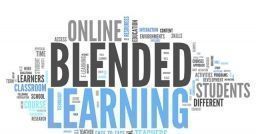
6 blended training models that guarantee successful training

Blended training uses a combination of both online learning and face-to-face instruction to achieve the training results. Here are 6 models developed by trainers and educators to enhance this training method.
More and more often, together with 100% eLearning training, education institutes also offer "blended" training courses using different levels of online training and face-to-face instruction. This training method allows the customization of training contents and greater teaching flexibility, while also guaranteeing the best possibility of acquisition of contents by the students. It is also highly appreciated by students who are enthusiastic because they understand the high potential offered by combined learning.
In recent years, trainers and teachers who have tried to create blended training paths have identified 6 training models that can alternatively be used with different types of students and content.
These models can be summarized as follows.
The Face-To-Face Driver Model
It is a model that works at best when students work at various levels of skill and mastery; in fact it allows the most expert to proceed quickly their studies, at a level equal to their skills and without boredom, and grants to less prepared students the possibility to repeat training quotas online until they achieve or equalize the knowledge and skills of the most experienced peers.
The Rotation Model
Variants of the learning station model allow students to do face-to-face training with their teachers and then switch to online work. This model allows students who are performing well in one area, but not in the other, to have a face-to-face meeting with their teachers on the less strong subject before moving to online learning stations for the strongest subject.
The Flex Model
This model is essentially based on the provision of online instructions, with teachers acting as facilitators rather than as instruction providers, and with lower importance to the level of assessment. It is a model used mainly in cases of students at risk, with attendance problems or studying in a part-time school program.
The Online Lab School Model
This model consists in a fully online education where there are no certified teachers available, but only supervisors of the training program. It is mainly used with students who need flexibility in training, who want to progress faster than in a traditional school environment, or who have to study at a slower pace than that offered by traditional classrooms.
Self-Blend Model
This model allows participation in online courses about topics related to those already carried out by training in the presence. It allows students to integrate online their face-to-face study programs and it is particularly useful for students who want additional learning on a specific topic, for students who want to achieve higher school results or credits, and for motivated and completely independent students.
The Online Driver Model
In this model - which is the exact opposite of a traditional face-to-face learning environment - students work exclusively from remote locations and receive all their instructions via online platforms. Usually, there is the possibility to relate with a teacher of the course or with a training tutor before and during the educational path for technical or content related issues.
Did you like this article? Sign up for the newsletter and receive weekly news!
Subscribe to NewsletterComments:
No comments are in yet. You be the first to comment on this article!